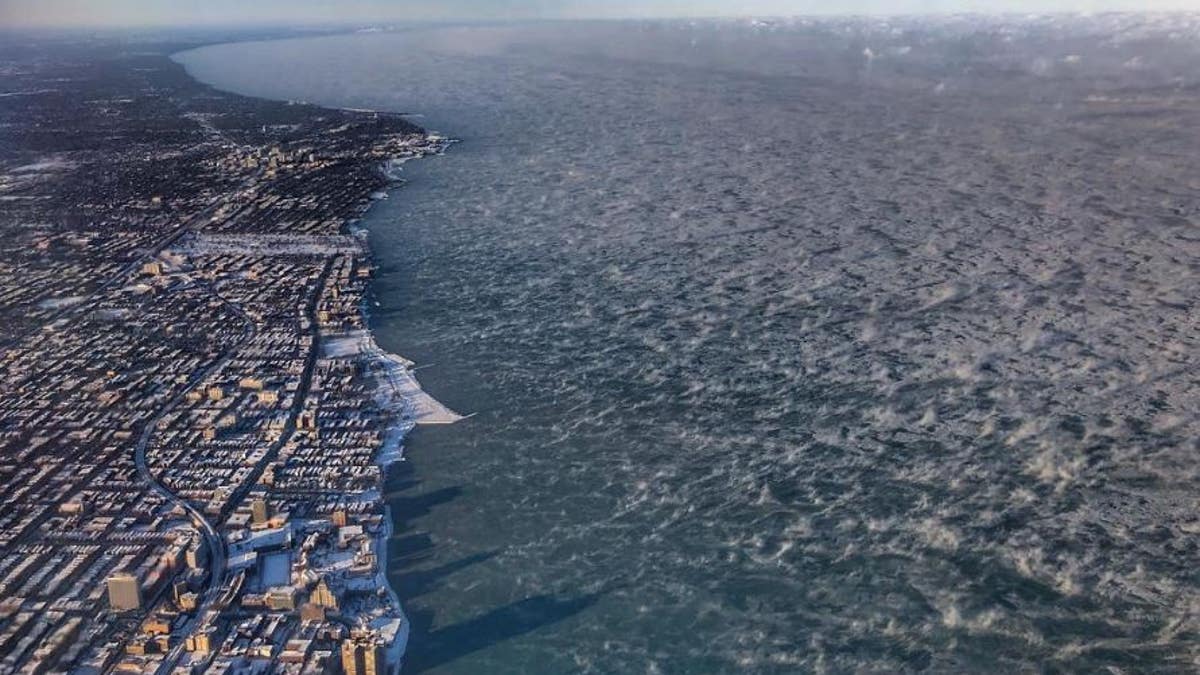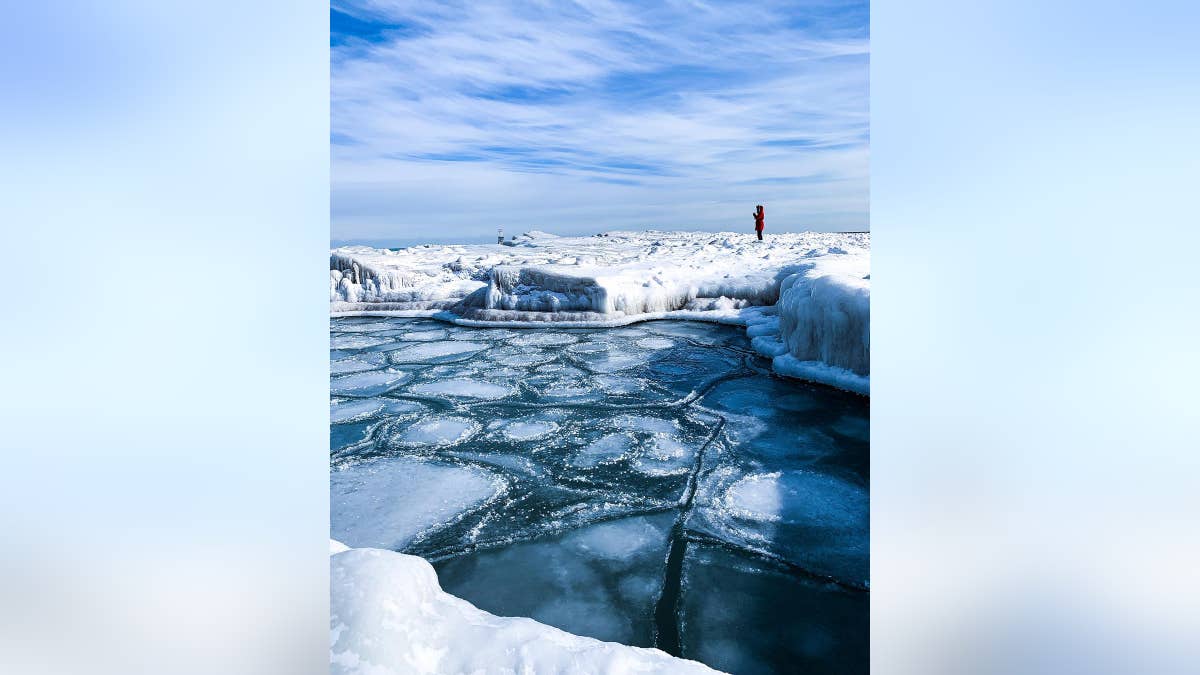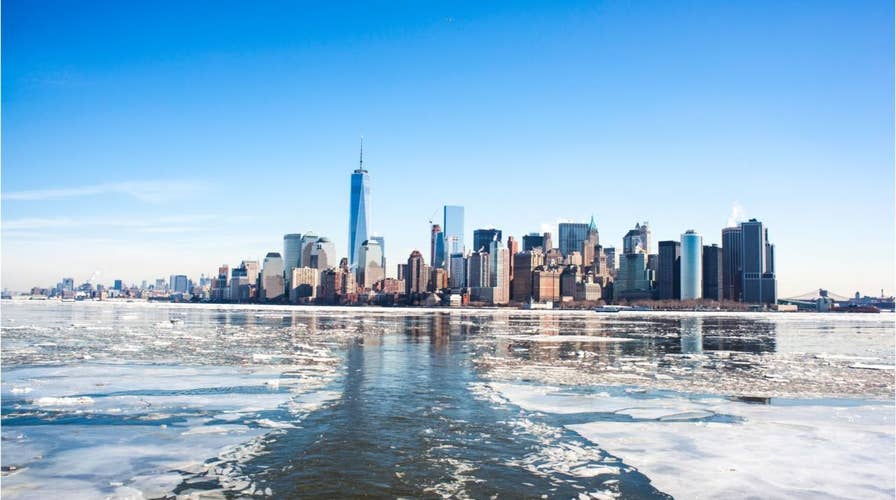The polar vortex brought life-threatening frigid temperatures, snow and intense winds, paralyzing cities across the Midwest. But there is one part of the vortex residents aren't complaining about: the view.
While temperatures dipped lower than Alaska and Antarctica in some areas this week, several bodies of water started to freeze and "smoke." On Wednesday, Chicagoans posted photos of the Chicago River's swirling sea smoke as O'Hare hit a record-low temperature of minus 22.
"[Sea] 'smoke' actually is water vapor that forms when really cold air moves over relatively warmer water and the thin boundary layer of warm air just above the surface," Sea Grant at the University of Maine previously explained in a paper. "When the evaporating water rises, the cold air can only hold so much moisture, forcing the liquid to condense into fog."
WGN-TV Chicago's chief meteorologist Tom Skilling said Lake Michigan, in particular, was quite a spectacle.
“Lake Michigan took on the appearance of a boiling cauldron as air of minus-20 degrees and colder made contact with water sitting just above the freezing level,” Skilling described in a report Wednesday. “I’ve lived here 40 years and never until today have never seen a more spectacular display of ‘sea smoke.’"
However, in a previous report, Skilling revealed Lake Michigan has never actually completely frozen over, though it has gotten close.
"It has not [frozen over], but it's possible in a winter when severe cold envelops the north and central Midwest. Wave action and wind, combined with the vast reservoir of heat contained in the lake, have so far prevented complete freezing," Skilling told a viewer in 2017, noting the lake reached nearly 95 percent ice coverage in the winters of 1903-04, 1976-77, 1978-79.
By Thursday, Lake Michigan was essentially a winter wonderland — as several residents pointed out.
"Welcome to Chiberia," a Chicago resident named Maria wrote on Instagram, revealing a "frozen" view of Lake Michigan from North Avenue Beach.

A view of Chicago from North Avenue Beach. (Instagram/@mariadigi6)
A New York City-based public relations professional shared an aerial view of the Windy City as she flew over Chicago on Wednesday.
"Work takes me to beautiful tropical places," she joked online. "But sometimes work brings me from cold to COLD ... a negative 11 degrees while landing over a very frozen Lake Michigan."

An aerial view of Chicago on Jan. 30, 2019. (Instagram/@cessiec)
She was fortunate to be able to successfully catch a flight.
Airlines across the U.S. canceled more than 2,000 flights Wednesday as “historic low” temperatures hit the Midwest, FlightAware reported, prompting travelers to frequently check for delays and cancellations this week as the storm continues.
Photographer Alex Enriquez captured a stunning image of the ice-covered lake from North Avenue Beach days before the polar vortex officially arrived. His Instagram post received nearly 600 likes as of Thursday afternoon.

An image of North Avenue Beach taken by a Nikon D750. (Instagram/@alex.e.photo)
Fellow photographer Kevin Foley snapped a chilly sunset picture on Jan. 27.
Days later, he shared an updated photo — this time, of the Chicago River. In the picture, sea smoke can be seen rising far into the air.

A photographer shares a photo of sea smoke rising from the Chicago River on Jan. 31, 2019. (Instagram/@fosholey13)
The deep freeze isn't expected to last too much longer. So, soak in the incredible views while you can.
By next week, Weather Underground predicts some states, like Illinois and Michigan, will see 50-degree weather.

